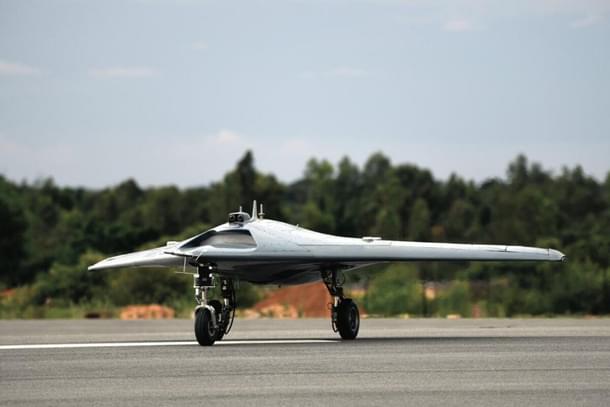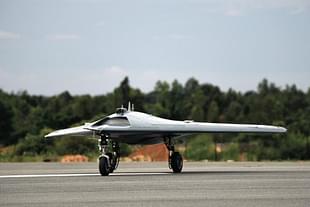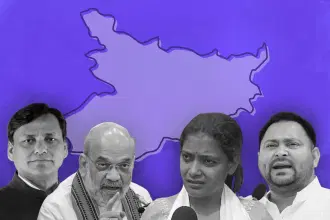News Brief
Maiden Flight Test Of India’s Stealth Flying Wing Technology Demonstrator Carried Out Successfully
Swarajya Staff
Jul 01, 2022, 03:28 PM | Updated Jul 04, 2022, 11:00 AM IST
Save & read from anywhere!
Bookmark stories for easy access on any device or the Swarajya app.


India’s secretive unmanned combat aerial vehicle (UCAV) programme, under which a technology demonstrator called stealth wing flying testbed or SWiFT is being developed, has reached a new milestone.
The demonstrator built under the programme successfully completed its maiden flight test today (1 July) at the Aeronautical Test Range in Karnataka's Chitradurga.
“Operating in a fully autonomous mode, the aircraft exhibited a perfect flight, including take-off, way point navigation and a smooth touchdown. This flight marks a major milestone in terms of proving critical technologies towards the development of future unmanned aircraft and is significant step towards self-reliance in such strategic defence technologies," the Defence Research and Development Organisation said.
Congratulating the DRDO after the flight, Defence Minister Rajnath Singh said, "It is a major achievement towards autonomous aircrafts which will pave the way for Aatmanirbhar Bharat in terms of critical military systems."
Last year, reports said that the Combat Vehicles Research and Development Establishment, a Chennai-based lab of the DRDO, has handed over retractable landing gear systems for SWiFT.
In a technology bulletin released in October 2020, the DRDO had said that it had completed the designing of the landing gear for the programme and the manufacturing of the airworthy components was under progress.
"SWiFT UAV is a Technology Demonstrator and is a scaled-down version of Ghatak UCAV (Unmanned Combat Air Vehicle). The main intent of SWiFT UAV is to demonstrate and prove the stealth technology and high-speed landing technology in autonomous mode," the DRDO has said.
A model of this platform was recently seen in a video lecture published by the Indian Institute of Technology Kanpur, which is involved in the fundamental research and testing related to the stealth UCAV programme.
It was most likely a “mockup or a sub-scale flying model” of the SWiFT.
Ghatak’s undercarriage and landing gear were seen in this model, which was sitting in the background as an IIT Kanpur professor delivered a lecture in the institution’s Aeromodelling Lab.
Ghatak is intended to be an unmanned aircraft which can not only be used for surveillance but also to fire precision weapons at designated targets, using its stealth features to avoid detection by enemy sensors in contested airspace.
The Bengaluru-based Aeronautical Development Agency is developing the UCAV with participation from the Defence Electronics Application Laboratory and many other labs of the Defence Research and Development Organisation.
Work on the project, which was earlier called AURA (short for Autonomous Unmanned Research Aircraft), began sometime around 2009.
The programme is linked to the development of India’s fifth-generation stealth fighter Advanced Medium Combat Aircraft or AMCA.
The Ghatak programme formally received sanction as a ‘Lead-in Project’ in May 2016 and started receiving funding from early 2017, Livefist has reported.
Technical details about the UCAV project are not available due to its classified nature. Wrapped in secrecy, the programme is under the direct oversight of the Prime Minister’s Office and the National Security Advisor.




